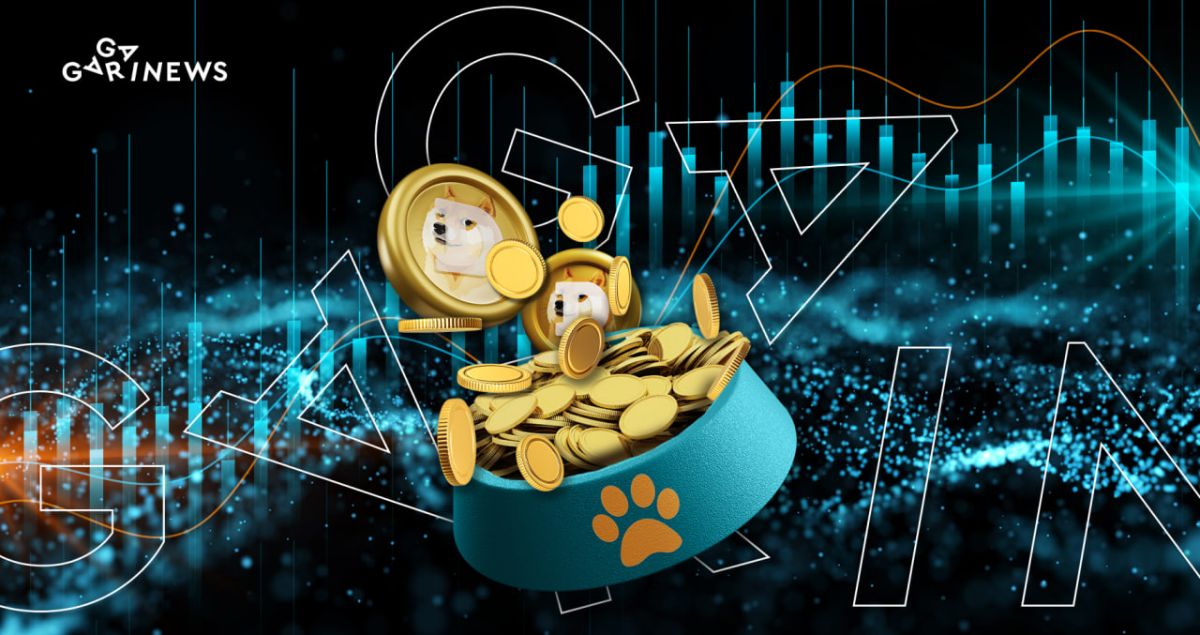Dogecoin (DOGE): From Zero to Hero

Dogecoin (DOGE) began as a successful joke and the first meme-based cryptocurrency, but has now risen to the top 10 in terms of market capitalization.
On this page
Dogecoin: from a cute red-headed Kabosu to a 15,000% surge
The US coin Dogecoin (DOGE) was launched on December 6, 2013. Fair enough, the coin was a bummer. Crypto's hype and speculative nature was all its creators intended to mock. It didn't work.
Right from day one, there was a flurry of investors for the world's first meme coin. Dogecoin rocketed 15,000% during the last bull run, in 2021. Nowadays, DOGE's rivals are other meme coins as well as the ” tough guys” Cardano, Polygon or Solana, ranked next to Dogecoin on a global list of cryptocurrencies. Dogecoin occupies 9th place, with a market cap of $11.1bn.
Dogecoin skyrocketed by 15,000% in 2021
Source: Forbes
Doge, an Internet meme with a picture of Kabosu – a red-haired Shiba Inu dog with captions in broken English, formed the visual symbol for the coin. Originally, the story originated on Twitter. Programmer Jackson Palmer then developed a Dogecoin website describing its concept, and lied in wait for feedback from like-minded individuals. That's how Dogecoin got another developer, Billy Marcus.
DOGE is a decentralized, open-source cryptocurrency inspired by Litecoin. Its developers borrowed the original mining mechanism from Bitcoin and Luckycoin (a fork of Bitcoin). Dogecoin, akin to Bitcoin, has a blockchain of its own
Dogecoin employs the PoW consensus algorithm. While there were rumors of a PoS transition for memecoin (even Vitalik Buterin once speculated this), there are no intentions for such a change yet. Although PoW is implemented, the developers of the project claim that the impact of Dogecoin mining on the environment is minimized. The block time of DOGE is rather high (1 block in 1 minute), while the transaction fee is fairly small – about 0.01 DOGE.
Dogecoin price trend in 2022-2023
Source: coinbase
Retail investors: Dogecoin – a pyramid scheme
Dogecoin is currently run and maintained by the Dogecoin Foundation, a non-profit organization. This fall, the Foundation became one of the defendants in a pyramid scheme case. A $258 billion lawsuit was brought by a group of investors in federal court in Manhattan. Among the other defendants is entrepreneur Elon Musk, his Tesla, SpaceX, Boring Co and several other companies. The plaintiffs allege that Musk and his firms deliberately inflated the price of DOGE by more than 36,000% over two years before allowing it to plummet. It is implied that Elon Musk was aware that the cryptocurrency had no intrinsic value and that its value “depended solely on marketing” all along. Consequently, the lawsuit states, defendants “profited in the tens of billions of dollars” by defrauding fellow investors. To put it plainly, Musk is presumably the main investor behind the coin. The latter, in turn, argues that he was “just asked by the guys”.
Doggie’s tocenomics
Dogecoin originally had a maximum supply of 100 billion coins. Following the 2014 hard fork, though, the limit was removed. The Doge issuance is now set at 10,000 coins per block. There are 5 billion 256 million coins minted per year. Dogecoin comes with no upper limit on the amount of DOGE in circulation. Similar to Bitcoin, DOGE is generated via remuneration for the mining of blocks. The reward system is as follows: for every additional 50,000 coins mined, the reward is halved.
Source: White paper on dogecoin
- DOGE circulating supply is about 132.7 billion coins.
- As of early 2023, the Dogecoin exchange rate is roughly $0.08.
- Dogecoin had 4.4 million wallet addresses by the end of 2022.
- Hashrate: 484.91 TH/s.
The content on The Coinomist is for informational purposes only and should not be interpreted as financial advice. While we strive to provide accurate and up-to-date information, we do not guarantee the accuracy, completeness, or reliability of any content. Neither we accept liability for any errors or omissions in the information provided or for any financial losses incurred as a result of relying on this information. Actions based on this content are at your own risk. Always do your own research and consult a professional. See our Terms, Privacy Policy, and Disclaimers for more details.




























